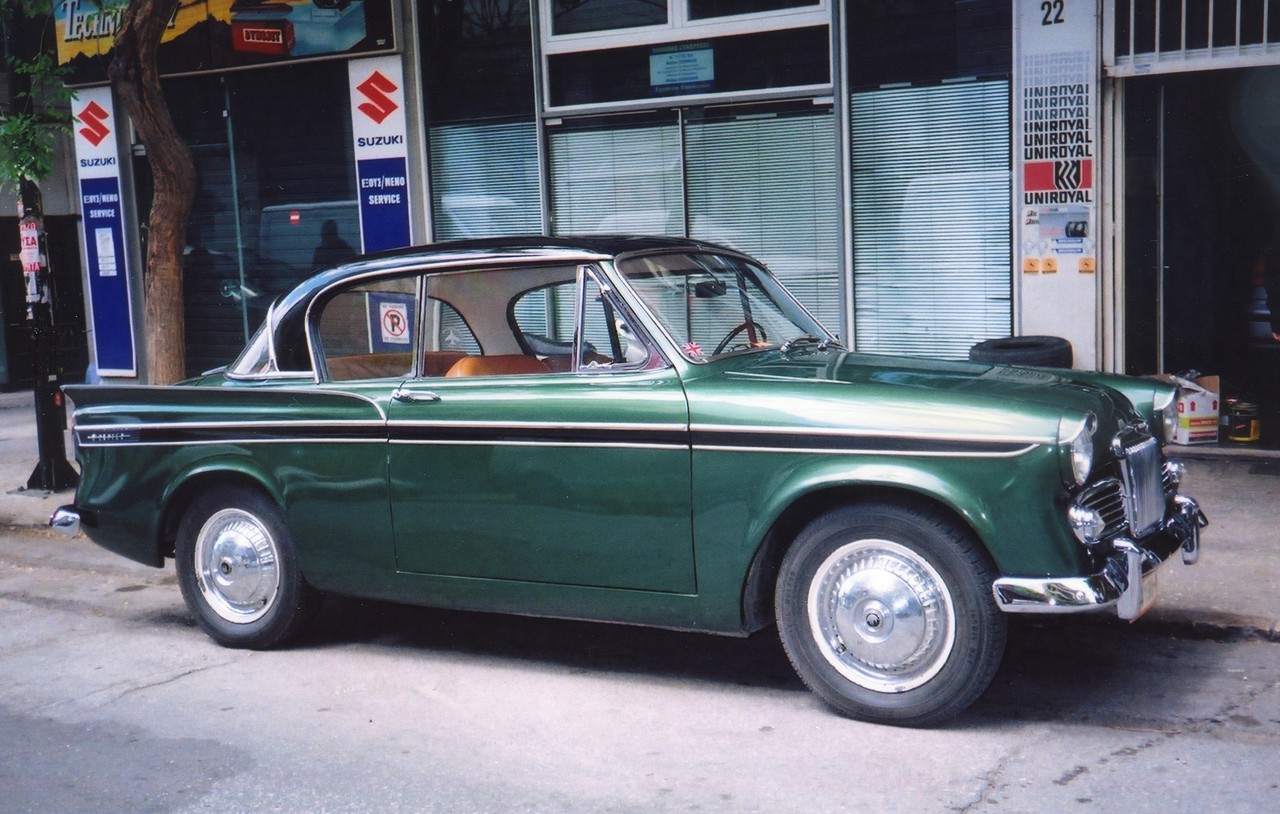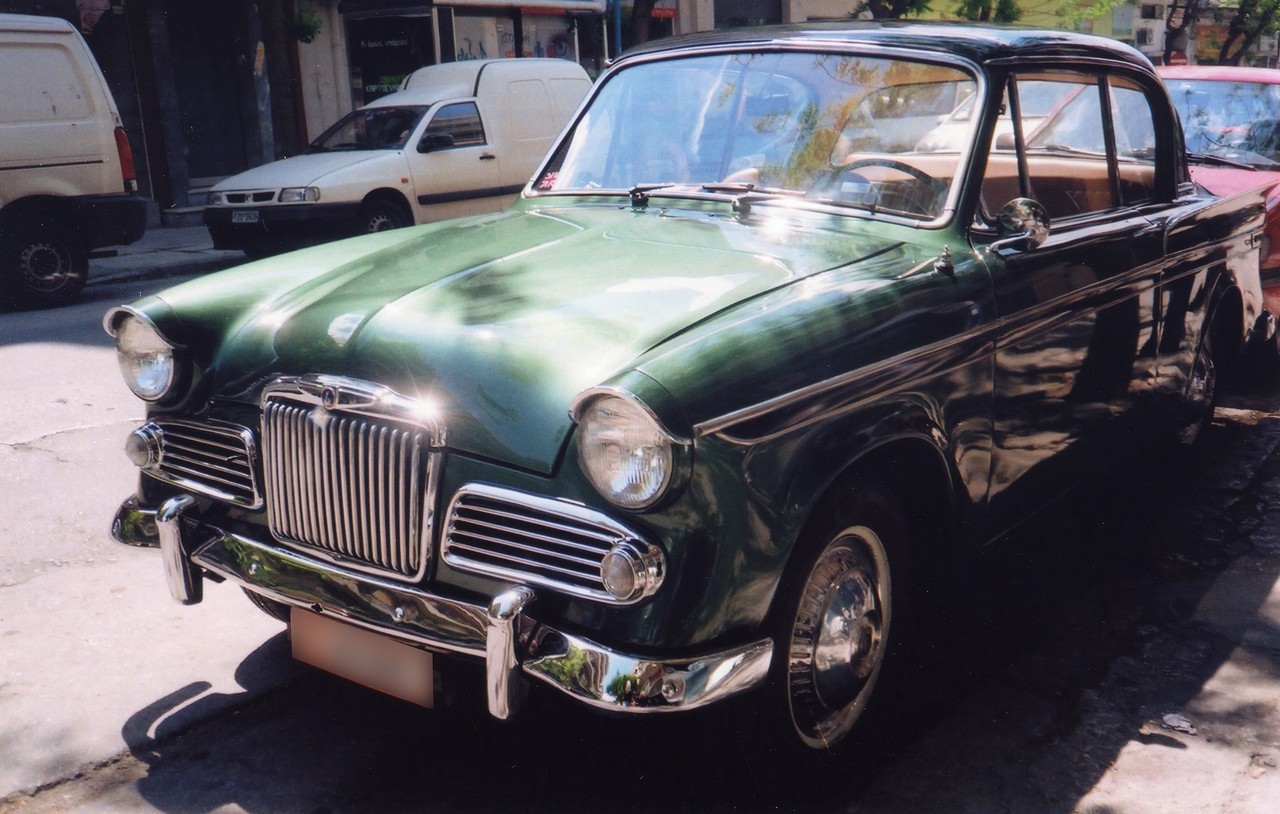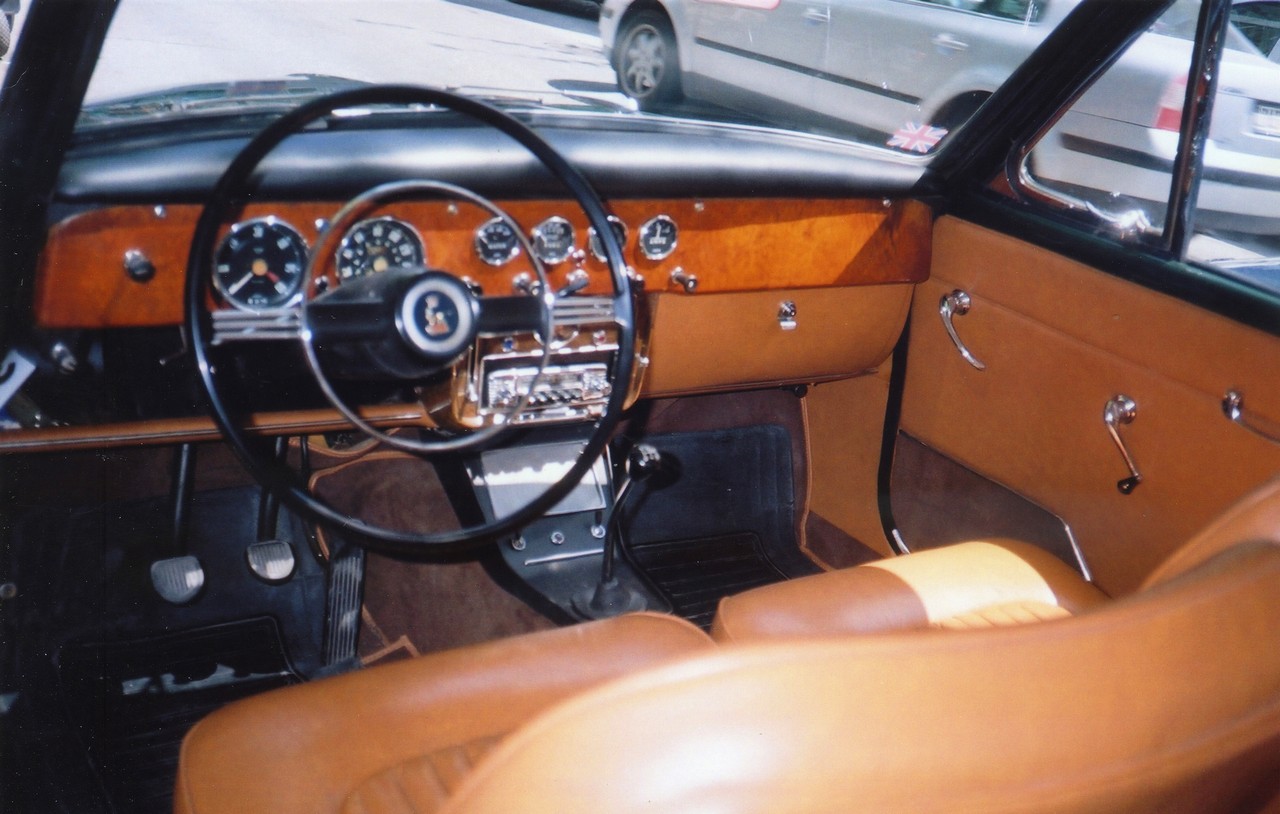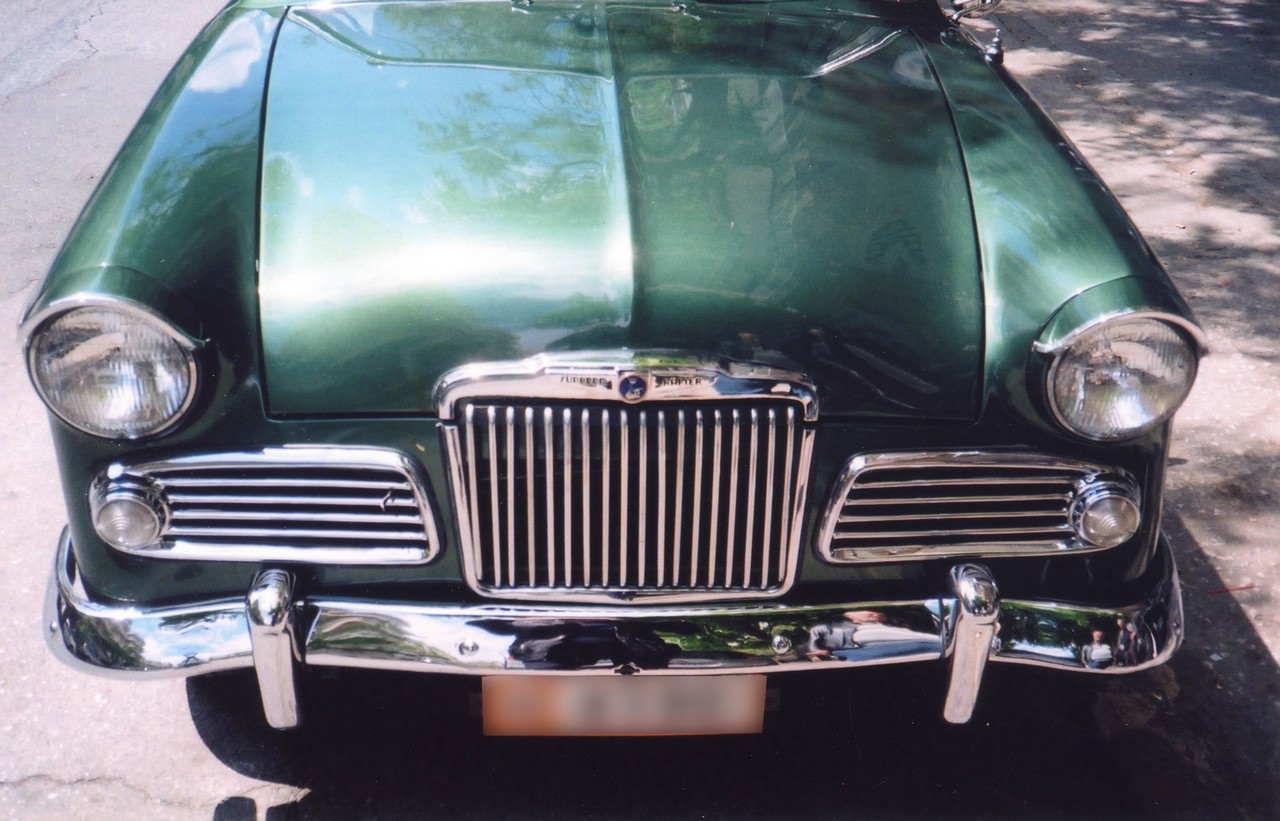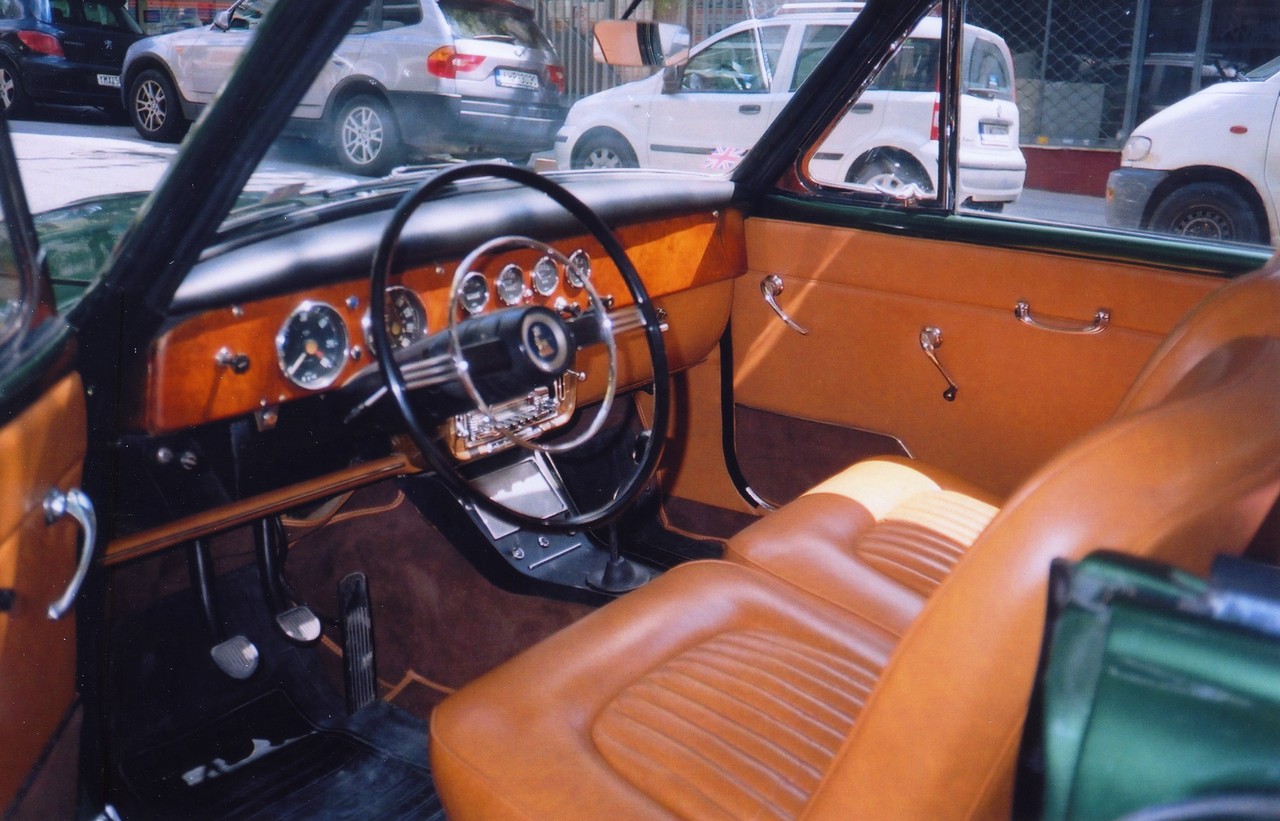For sale Sunbeam Rapier III
EXCLUSIVE
The Rapier in general
The Sunbeam Rapier is an automobile produced by Sunbeam from 1955 to 1976, in two different body-styles, the "Series" cars (which underwent several revisions) and the later (1967–76) fastback shape, part of the "Arrow" range.The first generation Rapier was the first of the "Audax" range of light cars produced by the Rootes Group, in this instance as part of their Sunbeam marque. Announced at the London Motor Show in October 1955 it preceded its Hillman Minx and Singer Gazelle counterparts which were not introduced until 1956. A four-seat, two door hardtop coupé – designated Series I with the introduction of the Series II in 1958 – it was different from the Sunbeam Mark III, the car it would eventually replace. Although designed "in house" by the Rootes Group, it was inspired, via the Raymond Loewy design organisation, by the new-generation Studebaker coupés of 1953.
The Series III was introduced in September 1959.
Rootes made subtle changes to the car's body which individually were insignificant but when combined, considerably altered its appearance. For example, the number of horizontal bars in each of the side grilles was increased from three to four and the boot lid acquired an oblong number plate recess and surround in place of the square one of the earlier cars. The most striking change was the redesigned side flash, now narrower and lower down the side of the car with the Rapier script on its rear end. The most subtle change, however, was a reduction in thickness of the windscreen pillars and a lowering of the scuttle line to give a 20% increase in windscreen area.
Inside the Series III the changes were more evident. Rootes stylists completely redesigned the seats and interior panels and specified that they be trimmed in single colour vinyl with contrasting piping. For the first time, deep pile carpets were fitted as standard in the foot-wells (previous versions had rubber mats). The steering wheel, control knobs and switches were in black plastic instead of beige. The dashboard, instead of being, as in the earlier cars, padded metal and plastic, was covered in burr walnut veneer surmounted by a padded crash roll fitted with black-faced British Jaeger instruments.
Mechanically, the Series III benefited from the design of the Sunbeam Alpine sports car with which it shared its engine. Although the engine's displacement was still 1,494 cc (91.2 cu in), it was fitted with a new eight-port aluminium cylinder head with an increased compression ratio and redesigned valves, and used a new, sportier camshaft. The twin Zenith carburettors from the Series II remained but were mounted on a new water heated inlet manifold. The result of these changes was a power increase of 5 bhp (4 kW; 5 PS) to 78 bhp (58 kW; 79 PS) at 5400 rpm.
Gearbox changes included higher second, third and top gear ratios, and a reduced angle of gear lever movement to make for shorter lever travel and snappier changes. New front disc brakes significantly improved the Rapier's braking capability and widened its front track to give greater stability and improved road-holding.
A saloon with overdrive was tested by British magazine The Motor in 1960 and had a top speed of 91.7 mph (147.6 km/h) and could accelerate from 0-60 mph (97 km/h) in 16.6 seconds. A fuel consumption of 29.5 miles per imperial gallon (9.6 L/100 km; 24.6 mpg-US) was recorded. The test car cost £1045 including taxes.
The Series III, of which 15,368 units were built (hardtop and convertible) gave way to the Series IIIA in April 1961.
A few words about the car on sale
Since then the car is parked in an indoor garage and I have been its only driver. I will try to describe, as briefly as possible, the history of my Rapier with chassis number B3055331 LHP and engine number B3055331 LH.
Soon after its acquisition, I started the restoration work trusting the technicians I knew, with many years of expertise on this model.
All the mechanical parts together with the interior parts (seats, dashboard etc) were disassembled leaving only the body. Together with the body refinisher, we surprisingly discovered that little work had to be done in a few sensitive places. The paint preparation work was next. The paints were carefully selected in terms of quality. A dark green with black side lines was selected, original factory combination option. Meanwhile all the mechanical parts were disassembled and cases and other external parts were sandblasted. The engine was fully renewed with the use of new parts. The same happened with the gear box, overdrive and differential as well as with the steering system.
The suspension was also renewed with new springs, shock absorbers and other moving parts of the front system. The electrical system, dynamo and starter were inspected in detail and many new parts were also used.
Work was done to the mechanical and hydraulic brakes, and new spare parts were used wherever possible. The transmission shaft was balanced after the cardan joins were replaced with new ones.
Once the mechanical parts were finished, the technicians started working on the interior. The dashboard was polished, the instruments and the radio were put in place. The seats, side panels and roof were maintained and dressed with new material. New carpeting was used all over.
The result in all details was more than satisfying. All the effort – which was more like a hobby to me – and the cost was worth it.
Driving my Rapier which now has FIVA class A3 certification, I have participated in several classic events and rallies. I want to thank all the people who - in any way - joined me on this beautiful trip! Most of them have now retired, I meet them often and we share lots of these special memories!
Price €15.000 or near offer
I am interested in the ad
Please contact me for giving me more information.
** Normally we reply the same day or the next working day. In case your answer delays, pls check also your spam folder!










